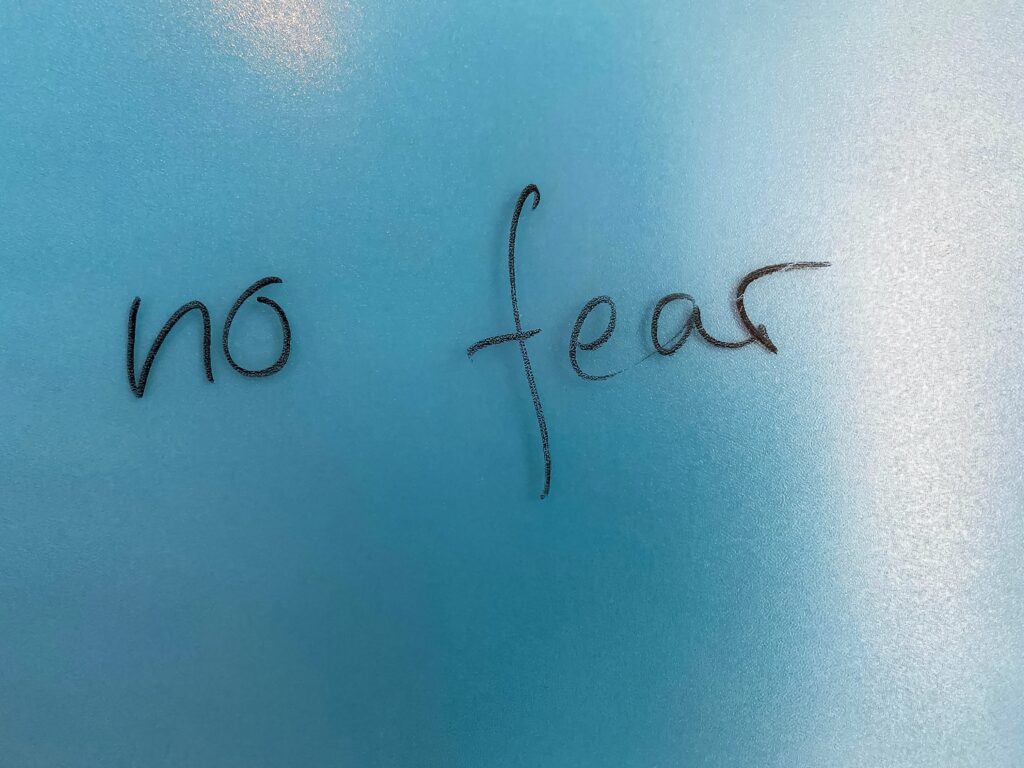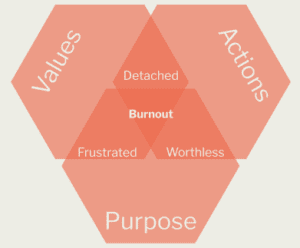
Fearfulness is the Enemy of Innovation
What is fear?
According to Psychiatrist Elisabeth Kübler-Ross emotions are either derived from fear or from love. There is no doubt that we will see both of these present in a working environment, both possessing positives and negatives, but one has the potential to be much more prolific and damaging than the other. In this article we will explore the presence of fear in the workplace, its effect, what influences it, how we recognise it and how we combat it.
Fear holds within it unfathomable variations, depths and angles, depending on individual personalities, situations and conditions. What we fear and the way we process it will depend on the stories of our past and our understanding of the present. These stories we tell ourselves and that we have experienced will inevitably shape the way we manage fear and react to it. Understanding the pattern of our own behaviour will undoubtedly help us to navigate through situations, but we cannot prevent ourselves from never feeling fear and we cannot prevent others from behaving in a way that makes us fearful. However, we can endeavour to create an environment in our organisation where fear is not a villain, where its presence is a positive one that can be embraced, supported and used to fertilise innovation. We can begin to be motivated by fear, as opposed to being paralyzed by it.
To do this we need to first recognise what fear looks like in our working environment and establish whether it contributes to a negative or a positive outcome.
How might fear manifest itself in a work environment?
The American Psychological Association defines fear as “A basic, intense emotion aroused by the detection of imminent threat, involving an immediate alarm reaction that mobilizes the organism by triggering a set of physiological changes…Fear differs from anxiety in that the former is considered an appropriate short-term response to a present, clearly identifiable threat, whereas the latter is a future-oriented, long-term response focused on a diffuse threat….”
So, when we feel fearful, a chemical reaction takes place which stimulates an immediate emotional and physical response. This could manifest in a positive or negative way, depending on our current environment. In its simplest negative forms we want to either stay and fight or avoid and fly away. Anger is a classic form of a fighting defence, as is blame, discrimination, backstabbing and gossip. The counter to these is avoidance, denial and absence.
Are you experiencing these kinds of behaviour in your organisation?
If you are, it could be due to bad or toxic leadership. A toxic leader can be arrogant, impatient, intolerant, lacking empathy, and unable to take feedback. This could be due to being biassed, ignorant and/or them harbouring their own embedded fears. If your organisation is guided by one of these, we feel your pain, but if you ARE one of these, then, reading this article is a step in the right direction. We can help and you CAN make the change.
When you see colleagues from different departments and teams gossiping about each other, complaining, blaming each other for things that didn’t work and for their apparent shortcomings, you begin to see an organisation made up of separate tribes all with their own set of values and goals. The united vision is absent, instead of working together, they are competing. Collective intelligence is out of the window and it is every ‘man’ for himself. Even within the individual tribes, there will be dissension; those who choose to avoid the drama and gossip may be ostracised and ignored. Behaviour becomes instinctive and animalistic rather than intelligent and collaborative.
Even if the leadership in essence isn’t toxic, there may be individuals who are planting the seeds of fear in their subordinates and in their colleagues. It just takes one or two of these influencers to spread doubt and uncertainty, to suggest that things are not as they may seem, to cause an adverse reaction to any form of creativity. This toxicity stifles innovation and innovation is the fuel for economic growth and ultimately, a better quality of life. In the words of Steven Jeffes “Innovation is the unrelenting drive to break the status quo and develop anew where few have dared to go.“
How can we nip this behaviour in the bud or change what has started to grow?
The answer to this question must begin with understanding what innovation is and how to encourage and nurture it in your organisation. Innovation is a process for renewal. It is a process that requires creativity, open mindedness, collaboration and energy. Innovation cannot occur if the goal is not clear and the environment is risk averse..
To enable innovative conditions we need to eradicate objectivity. We must embrace the impossible and open the door to failure. In the words of Winston Churchill “Success is going from failure to failure without loss of enthusiasm”. If we can create an environment of safety, of trust, collaboration and inclusivity which stems from a clear definition of our vales, our objectives and goals, ensure that each individual is an important part of the process of working towards that and is valued, seen and heard, we can begin to allow innovation to flourish.
Ultimately, if someone is not going to go the distance with you, with the values and ethos of the organisation, they need to be taken out of the equation. This is not to say that anyone who disagrees with you should be dismissed – on the contrary, those who embrace innovation will question the assumptions and ask the difficult questions that allow ideas to flow and develop. The distinction between an innovator and a trouble maker is that the trouble maker is after results that benefit them alone. To cause problems and muddy the waters in order to prevent others from achieving and growing. Whereas the innovator wants results for themselves but not at the detriment of others, the innovator is looking at the bigger picture and the potential benefits for all those involved.
In conclusion, we cannot eradicate fear, but we can harness its power for the good. Fear can also be exciting: It can stimulate calculated risk taking that enables achievement and feelings of pride. Fear gives people the opportunity to support each other, to be kind and empathetic, to work as a team to find solutions. If the habitat is psychologically safe, if the communication is clear and open and the organisation is working together with an inert understanding of ‘WHY’ then fear can actually be the friend of innovation.
“A person who never made a mistake, never tried anything new.” Albert Einstein
Embrace Fear, Embrace Change: Instead of letting fear be a hindrance, use it as a catalyst for positive transformation. Foster a culture that values openness, collaboration, and innovation. Encourage empathy and support among team members, and prioritise well-being and work-life harmony. By recognising and combating fear, you can unlock the full potential of your organisation and create a thriving, resilient, and compassionate workplace. Together, let’s turn fear into a force for positive change.













































